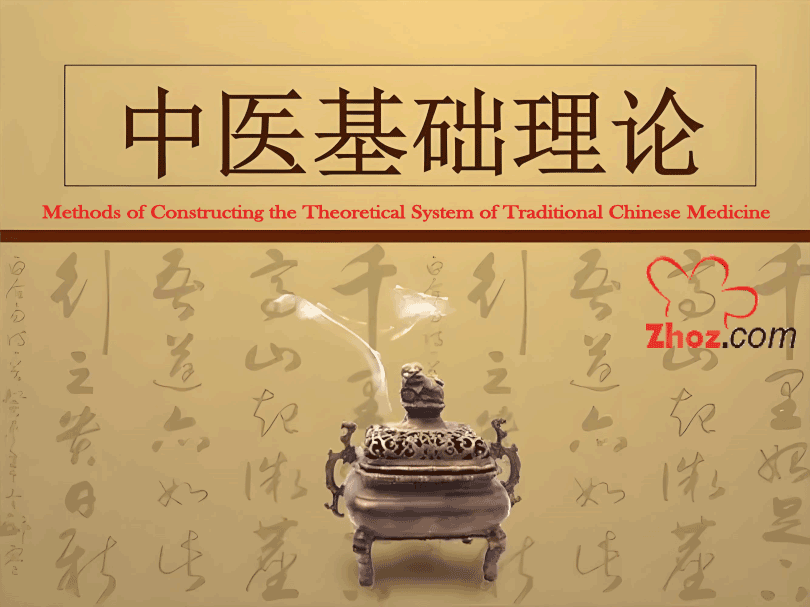中医理论体系的建构方法
The construction of the theoretical system of Traditional Chinese Medicine (TCM) is a complex process that integrates philosophical wisdom, scientific exploration, and clinical practice. It relies not only on the inheritance of traditional knowledge but also on continuous innovation and development. The following is a further elaboration and refinement of the methods for constructing the TCM theoretical system.
I. Philosophical Foundations and Thinking Methods
Philosophical Foundations
- Monism of Qi
As the core foundation of TCM theory, the monism of Qi emphasizes the cosmic unity and vitality of Qi, providing a unique perspective for understanding the essence of life and the mechanisms of disease.
- Yin-Yang Theory
The Yin-Yang theory reveals the essential laws of the oppositional unity of all things in the universe. TCM uses this theory to explain the balance and imbalance of physiological functions in the human body, guiding clinical diagnosis and treatment.
- Five Elements Theory
The Five Elements theory constructs a dynamic ecological model through the relationships of mutual generation and restriction, which TCM applies to explain the functional connections and pathological changes among the organs.
Major Thinking Patterns
- Metaphorical Comparison
TCM deepens the understanding of the complex mechanisms of the human body by drawing analogies between natural phenomena and physiological or pathological phenomena in the body.
- Systemic Thinking
This emphasizes that the human body is a complex system composed of multiple interrelated and mutually constrained subsystems, focusing on examining health issues from a holistic perspective.
- Dialectical Thinking
Dialectical thinking in TCM is reflected in the analysis of disease syndromes, utilizing the four diagnostic methods to grasp the essence of diseases and implement individualized treatment.
II. Specific Construction Methods
- External Observation for Internal Understanding
This method involves detailed observation of the patient’s external manifestations (such as symptoms and signs) combined with TCM theory to infer the pathological changes of internal organs, which is a crucial diagnostic tool in TCM.
- Metaphorical Comparison
This method extends beyond the analogy between natural phenomena and physiological/pathological states to include the relationship between the properties of medicinal substances and the functions of organs, enriching TCM’s pharmacological theories.
- Analogical Reasoning
In addition to the analogy between natural phenomena and physiological/pathological states, TCM often employs analogical reasoning to explore herbal combinations and formula compositions to enhance therapeutic effects.
- Internal Reflection
This emphasizes that practitioners enhance their perceptual abilities through internal cultivation (such as Qigong and meditation) to gain direct insights into the physiological and pathological changes within the body, representing a highly personalized approach to diagnosis and treatment.
- Imagery Thinking
The TCM theoretical system is rich in vivid imagery, such as comparing Qi and blood to rivers and organs to government offices. This figurative expression aids beginners in understanding and mastering TCM theories.
- Intuitive Thinking
Through long-term clinical practice, TCM practitioners gradually develop a direct perceptual ability to grasp the essence of diseases, known as intuitive thinking, which often allows them to quickly identify key issues in complex cases.
- Dialectical Thinking
Dialectical thinking runs throughout the entire process of diagnosis and treatment in TCM, where comprehensive analysis of the patient’s symptoms leads to the formulation of personalized treatment plans, achieving “different treatments for the same disease” or “same treatment for different diseases.”
- Exploratory and Contradictory Testing
When faced with complex or difficult cases, TCM practitioners may employ exploratory treatments, observing patient responses and adjusting treatment plans based on feedback. This method reflects the flexibility and dynamism of the TCM treatment process.
中医理论体系的建构,是一个融合哲学智慧、科学探索与临床实践的复杂过程,它不仅依赖于对传统知识的传承,更在于不断创新与发展。以下是对中医理论体系建构方法的进一步完善与阐述。
一、哲学基础与思维方法
哲学基础
- 气一元论
作为中医理论的核心基石,气一元论强调了气的宇宙统一性和生命活力,为中医理论提供了认识生命本质和疾病机制的独特视角。
- 阴阳学说
阴阳学说揭示了宇宙万物对立统一的本质规律,中医运用此学说阐述人体生理功能的平衡与失调,指导临床诊断和治疗。
- 五行学说
五行学说通过相生相克的关系,构建了一个动态的生态系统模型,中医将其应用于解释人体脏腑之间的功能联系与病理变化。
主要思维模式
- 取象比类
中医通过观察自然现象与人体生理病理现象的相似性,进行类比推理,深化对人体复杂机制的理解。
- 系统思维
强调人体是一个由多个相互关联、相互制约的子系统构成的复杂系统,注重从整体角度审视健康问题。
- 辩证思维
中医的辩证思维体现在对疾病证候的辨析上,通过四诊合参,把握疾病的本质,实施个体化治疗。
二、具体建构方法
- 司外揣内
通过细致观察患者的外在表现(如症状、体征),结合中医理论,推断其内在脏腑的病理变化,是中医诊断的重要手段。
- 取象比类
此方法不仅限于自然现象与人体生理病理的类比,还包括药物性味归经与人体脏腑功能之间的类比,丰富了中医的用药理论。
- 类比推理
除了自然现象与人体生理病理的类比外,中医还常运用类比推理探索药物配伍、方剂组成等,以增强治疗效果。
- 内景返观
强调医者通过修炼内功(如气功、冥想等),提升自身感知能力,以更直接的方式洞察人体内部的生理病理变化,这是一种高度个性化的诊疗方法。
- 形象思维
中医理论体系中充满了丰富的形象描述,如将气血比作河流,脏腑比作官府等,这种形象化的表达方式有助于初学者理解和掌握中医理论。
- 直觉思维
在长期的临床实践中,中医医生会逐渐培养出一种对疾病本质的直接感知能力,即直觉思维,它往往能在复杂病例中迅速抓住问题的关键。
- 辩证思维
中医的辩证思维贯穿于诊断、治疗的全过程,通过综合分析患者的证候表现,制定个性化的治疗方案,实现“同病异治”或“异病同治”。
- 试探与反证
在面对复杂或疑难病例时,中医医生可能会采用试探性治疗,观察患者反应,再根据反馈调整治疗方案。这种方法体现了中医治疗过程中的灵活性和动态性。
三、总结与展望
中医理论体系的建构方法,是中医学科得以传承与发展的关键所在。这些方法不仅具有独特的哲学底蕴和思维方式,还蕴含着丰富的实践经验和智慧。然而,随着现代医学的快速发展,中医也面临着新的挑战和机遇。因此,我们应在继承传统的基础上,不断引进现代科学方法和技术手段,克服传统方法的局限性,推动中医学的现代化进程。同时,加强方法学的研究与创新,为中医理论的进一步发展提供有力支撑。
